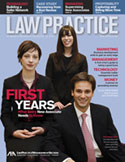LinkedIn reminds of what email was like in 1992.
By Erik J. Heels
First published 4/2/2007; Law Practice magazine, “nothing.but.net” column; publisher: American Bar Association

In the spring of 2006, I criticized LinkedIn for three reasons: (1) it generated spam from strangers, (2) I was concerned about the privacy of my address book, and (3) real relationships are better than virtual relationships. Looking at the proverbial LinkedIn glass pessimistically, I definitely considered it half empty. A year later, I have completely changed my mind and will now refute my earlier arguments.
![]()
LinkedIn Basics
LinkedIn <http://www.linkedin.com/> is a business social networking service. It acts as a central meeting place for business contacts to network and find other contacts. People use LinkedIn to get back in touch with college classmates, law school classmates, and former coworkers. They also use it for announcing job openings, looking for service providers, and recommending service providers. As of this writing, there are nine million LinkedIn members.
There are several LinkedIn account types. The most important difference between the personal free account and the various business accounts is the ability to send InMails, which are private messages sent within the LinkedIn system from one user to another. Think of InMails as email messages without email addresses. If you find somebody you know, and if they are accepting InMails, then you can contact them. I have a Business Plus account, which costs $500/year (or $50/month) and allows me to send ten InMails per month. Since LinkedIn has made InMails scarce, they have more value, and I use my InMails very selectively.
Refuting LinkedIn Critics
First, LinkedIn messages are not spam. Would you get a lot of spam if spammers had to pay $5 for each message? Probably not. When I get a LinkedIn InMail, it reminds me of what email was like 15 years ago. Each message was interesting, each was worth reading. I have found it to be the same with LinkedIn. There are the occasional off-the-wall communications, like a former coworker who pretends to know you and sends you a request to connect. You don’t have to accept requests to connect with people you don’t know (or don’t want to be associated with), and you don’t have to reply to InMail messages. From the InMail sender’s perspective, LinkedIn will credit back your account if you don’t get a reply in seven days.
Second, you are not sharing your address book with LinkedIn. You are sharing information about yourself in your public profile, but profile information is typically the same information that is already available on the web: where you went to school, where you worked, what your current bio says. You are also sharing information about who you know. And if you’d rather not tell everybody who you know, then you can make your connections private. But I think this defeats the purpose of LinkedIn. More on this below.
Third, real relationships do matter more than virtual relationships. But LinkedIn’s connections are based on the real relationships that you already have. By listing a former coworker or classmate, you’re simply making it easier to keep in touch with people who move more frequently than you can update your address book. In the Internet age, I challenge anyone to keep an address book current without the help of the people listed in the address book. This is one of the main benefits of LinkedIn.
How I’ve Used LinkedIn
Since becoming sold on LinkedIn, I have invited all of my clients, former clients, prospective clients, classmates, and former coworkers to reconnect. Since some people object to having their email addresses given to social networking services without their permission, I invited people in two separate ways. First, I searched for them in LinkedIn. Second, I sent them email with the URL for my LinkedIn profile <http://www.linkedin.com/in/erikjheels> and invited them to connect that way. If they were already a LinkedIn member and wanted to connect, great. If they weren’t, that was OK too.
I wish that LinkedIn existed in 1984 when I first got on the Internet. Since then, I have had the opportunity to meet thousands of people. But it is quite easy to lose touch thousands of classmates, thousands of coworkers, thousands of business contacts. In order to solve this problem, I decided to let a lot of people find me indirectly: by searching for themselves. Come on, admit it, you search for references to yourself on the Internet. Many people do, so I’m told. Knowing this, I created pages listing the people that I’d previously been associated with. For example, I have LinkedIn pages on my blog for high school classmates, MIT classmates, Verio coworkers, and others. I also created a social networking category on my blog <https://www.giantpeople.com/category/social-networking/>.
How I’ve Built My LinkedIn Network
Three month into my LinkedIn experiment, I have
232 connections, which is about 5% of the 8000+ contacts in my contacts database.
I added links to my LinkedIn profile on my weblog. I didn’t want to have more than one URL in my email signature file, so I created a special page on my website that includes links to the websites that comprise my Internet identity. It’s my meta home page <http://www.clocktowerlaw.com/ejh/LinkedIn/>. And the center page (of the nine thumbnail pages) is LinkedIn.
At the beginning of each month, I send out ten new InMail invitations. If some of those go unanswered, then I’ll send out a few more.
Most significantly, perhaps, is the fact that I mention LinkedIn when I meet new interesting people. The question “Do you have a LinkedIn account?” in 1997 is like the question “Do you have an email address?” in 1992. LinkedIn is the next big thing.
I know some lawyers who belong to LinkedIn but keep their connections private. But if you do this, you’re less useful to your prospective connections. If you are afraid that other lawyers will steal your clients by virtue of knowing who they are, then you’ve got big problems (and must not have very good relationships with your clients). And if you are the kind who would try to steal clients from another via LinkedIn, then you’ve got even bigger problems.
I recently met a like-minded lawyer who shared my no-nonsense approach to patent and trademark law. As it turns out, we were on opposite sides of a cease and desist letter, but that didn’t stop me from sending him a LinkedIn invitation. And him from accepting.
The Big Picture
I think you have to take the long-term view of things in life. Today’s adversaries might be tomorrow’s partners. Some businesses might need a patent lawyer or trademark lawyer only once per decade. Maybe they’ll find me via LinkedIn.
My long-term goal isn’t to have the most LinkedIn contacts. My goal isn’t to spam my contacts with information about the services my firm provides. My goal is to be more helpful to my connections than they are to me. In this way, people will want to continue to connect to me, and good things will happen.
The LinkedIn glass is definitely half full. And then some.



LinkedIn DOES suck – it is worthless as a potential employee screening site (e.g. recommendations and profile information) for one simple reason – there is no oversight. Employees of questionable value are free to recommend each other; LinkedIn employment “records” can be falsified and social pressure often times leads people to hide the truth about questionable employees. I spent an hour the other night perusing LinkedIn connections and their connections – what I saw were “padded” resumes and worthless employees recommending each other. Great, use it to keep in touch with your contacts, but there are a hundred other sites out there with better interfaces. As far as trusting LinkedIn “resumes” and recommendations I guess you get what you pay for. Good luck.
From my archives: LinkedIn Doesn’t Suck… http://is.gd/eIKn